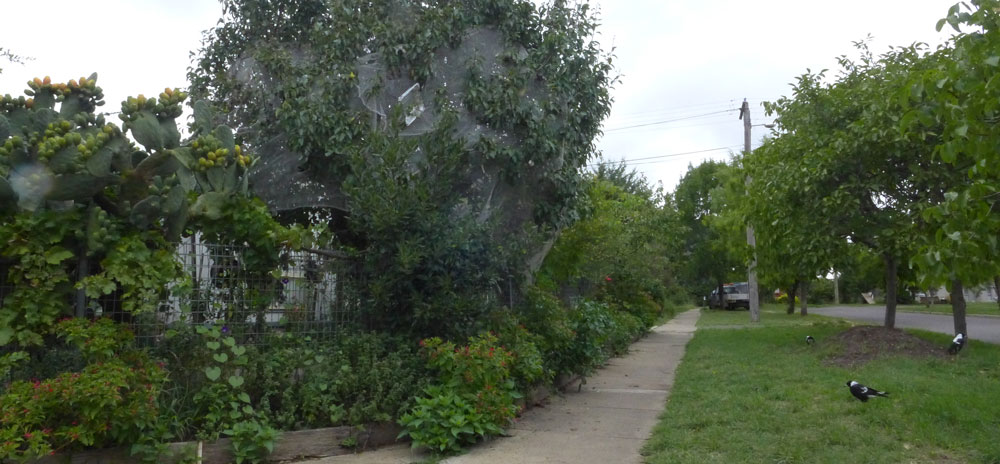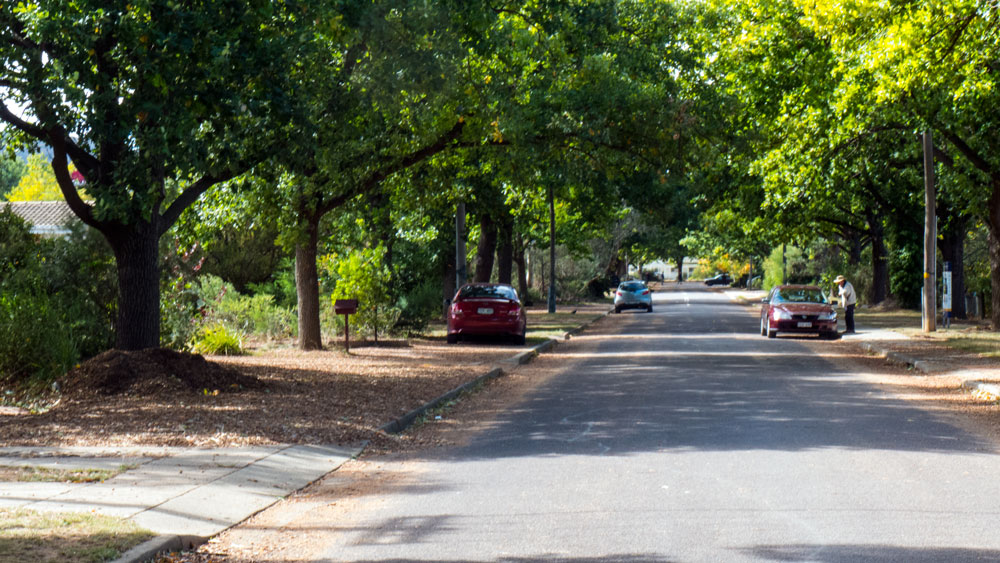Opinion: Urban Trees and Heat
A case study of neglect and willful blindness?
There was a routine piece in the Canberra Times about the current heat wave, temperature around and above 40 Degrees Celsius, and backyard trees or in some case about the lack of them. The article pointed to the now well established reality, that during such times those residential properties that lacked shade were suffering higher temperatures.
Likewise, it was pointing out that the temperatures were cooler within inner suburbs of Canberra where there is an abundance of trees , both within residential properties as well as in the public spaces, on the streets and parks etc.
There is now an amazing amount of ongoing research and evidence on the topic of how the heat island effects are increased with the reduction of urban and residential trees. The evidence has highlighted that in the recent decades of property development there has been a reduction of greenery and biodiversity being built into and allowed for in our newer suburbs.
This has resulted in a lot of the outer suburbs having far less green cover than some of the older suburbs. It has also meant the re-developments within the established suburbs have resulted in a marked loss of greenery and biodiversity.
With climate change issues now being an imperative, this reduction in trees has worked against efforts to deal with the rising temperatures and the increased frequency of heat waves. With too many of these newer developments having larger houses on smaller blocks, it has delivered an impossible situation. The availability of space for the later introduction of trees to provide shade has been severely limited, or is impossible in many cases. The residents therefore have been encouraged by the planning and design of their suburbs to rely totally on air conditioning. Subsequently we have the strains on energy and the overuse of coal based electricity.
The relevant evidence of the benefits of enhanced green infrastructure and the linkages to human health and climate change has being readily available. It is being constantly updated, new research undertaken and published in all forms of accessible formats.
Within Australia much work continues to be undertaken and published by bodies such as the Bureau of Meteorology and the CSIRO.
With all this data being available one would think that improvements to legislation to deal with these issues would by now be common place within the requirements for developments as overseen by planning and development authorities. One would think!
In the article referred to above, and such articles are common, the reporter gleaned some comments for the local chief of the planning and land development authority. The response at first can be seen for what it is. It is fairly meaningless bureaucratic spin that tells you that the authority is doing no much at all beyond business as usual. It is green wash at its worse. Here’s the comments as reported:
Environment and Sustainable Development Directorate director-general, Dorte Ekelund, said planning controls for development on suburban blocks did not limit or prevent factoring in trees. ”The ACT is committed to protecting hills, ridges and watercourses, providing urban parks and ensuring street verges are treed which all contribute to the ‘bush capital’,” Ms Ekelund said. ”Often new suburbs are more exposed to wind, dust and hotter temperatures while the vegetation establishes.”
The more interesting thing is what is not said. This simple response for this authority is a case study of the government planning authority either being deliberately ignorant of or deliberately avoiding the issues that the citizens would think the authority was there to deliver on.
It has been well established that in dealing with climate change in urban areas that any measures need to consider the total green infrastructure. Planning authorities need to consider the public areas as well as the residential/private areas within its jurisdiction.
By answering the query in the manner as reported, the authority is saying it maintains the public areas but has no interest in the residential developments. It is leaving this to market forces and the developers.
Given the commercial nature of residential development, the developers will do what is required and not much more. So if our legislatures and politicians have decided to ignore climate change and the health and wellbeing of its residents, than yes, the authority should not be responding to how it is dealing with the reduction of greenery in the suburban developments.
Then the question is, what is the authority there to deliver. I am sure that citizens elect politicians to oversee the future of their city and as part of that would expect the government to ensure that planning authority puts in place requirements to deliver on the future welfare of those who move into these newer suburbs or the redevelopments within older suburbs.
Surely this basic requirement is not simply left to the generosity of property developers who have as their bottom line that their commercial ventures that must deliver their expected high standard of profit margins? It has always been such.
Property development is about making money and not about the long-term health of residents. Here’s a story of a successful property developer. It is a rags to riches story. But typical of how developers are doing in the current economic climate.

The point being made here, is not that the developers are responsible for the damage to residents’ health and wellbeing. The onus remain directly with the elected politicians and their appointed planning authorities to deliver sustainable settlements to all. This includes new home buyers in outer suburbs as well as those moving into re-developed inner suburbs.
Why shouldn’t new home buyers, in a few years, enjoy the shade and please of trees as is present in many established suburbs. Why should they be forced to buy the only available house being offered which happen to have been built in such a manner that they will now become a danger to the residents own health and wellbeing. The majority of new houses have a total reliance on air conditioning and therefore are locked into paying the increasing energy prices.
Given that the evidence is available to avoid such developments happening, should it therefore follow that any group of resident who later realise that they have been delivered something that could have been avoided, should be taking action against the politicians and authority chiefs who have allowed this situation to continue.
The authorities know what they are avoiding dealing with on a day-to-day basis in their oversight of planning and developments. Anyone can use Google. All the information is out there. Is this a case of Willful Blindness?
Have our planning ministers and their authorities put themselves in a situation where they could be accused by residents who have bought in good faith. Buyers should be able to expect that the planning legislation would not deliver developments that become harmful to the health and wellbeing of the residents and their families?
These professional people in the planning authorities carry high levels of responsibilities and delegated authority.
As climate change issues increase and as temperatures become more extreme, as energy becomes overpriced, it is any easy prediction that a class action and insurance claim along these lines will probably surface somewhere soon.
It is time to get that law degree and to be available when the rush starts on cases of Willful Blindness against those responsible for planning authority’s legislation and decisions.
……………………………………………..
cross posted with our other blog
also see the research by Urbanism, Climate Adaptation and Health Cluster
————————————————
Paul Costigan, 21 January 2014

